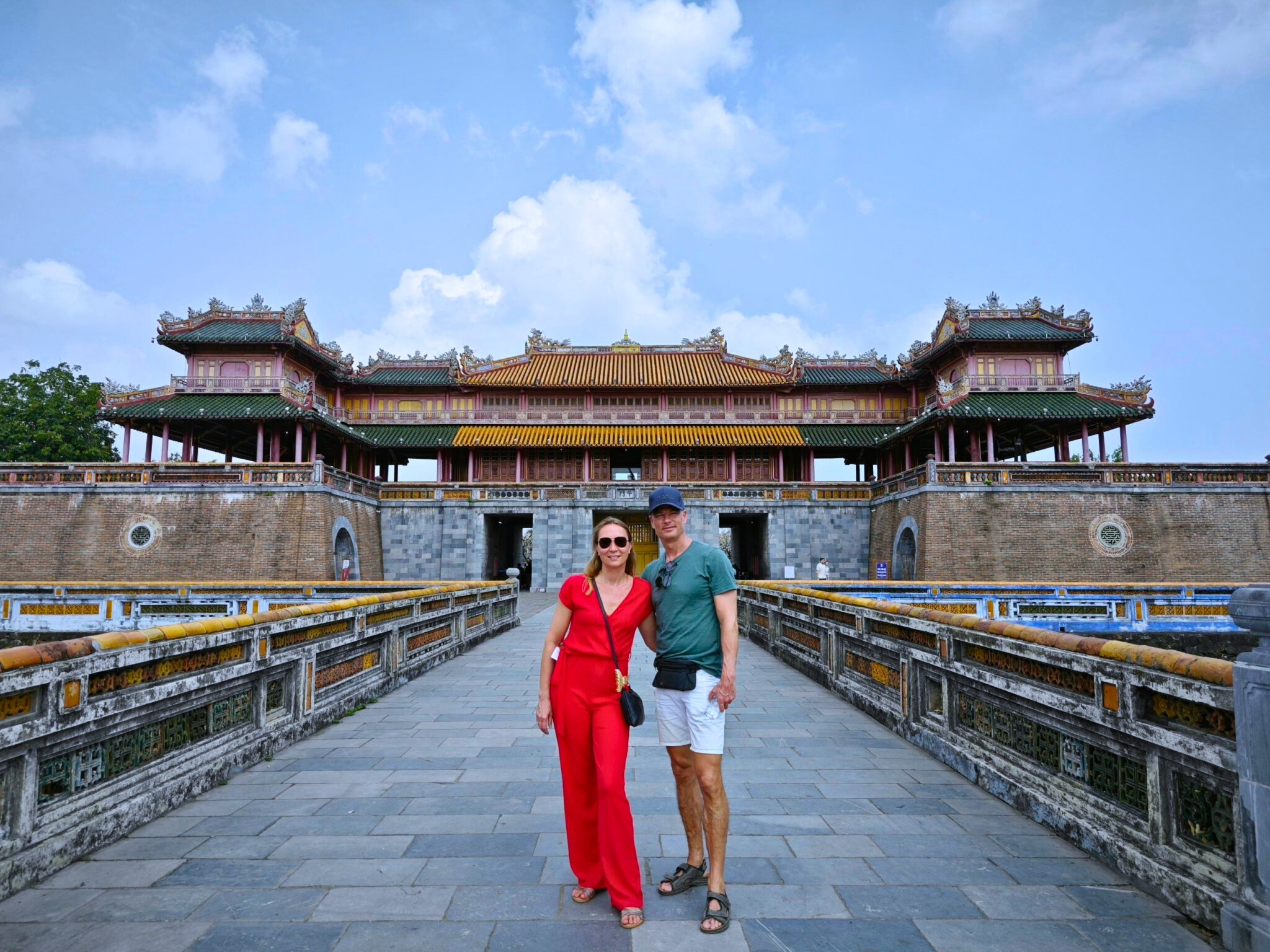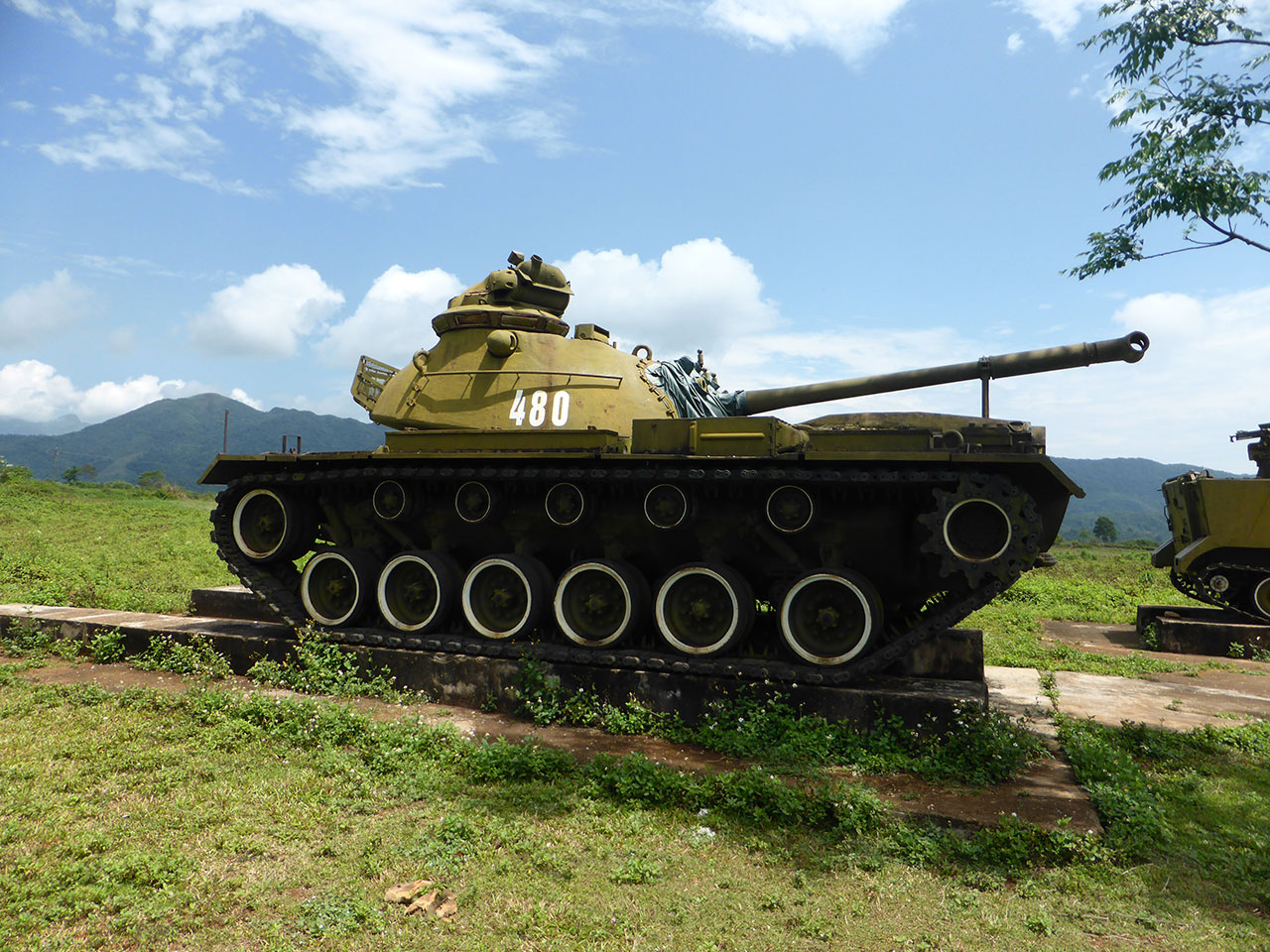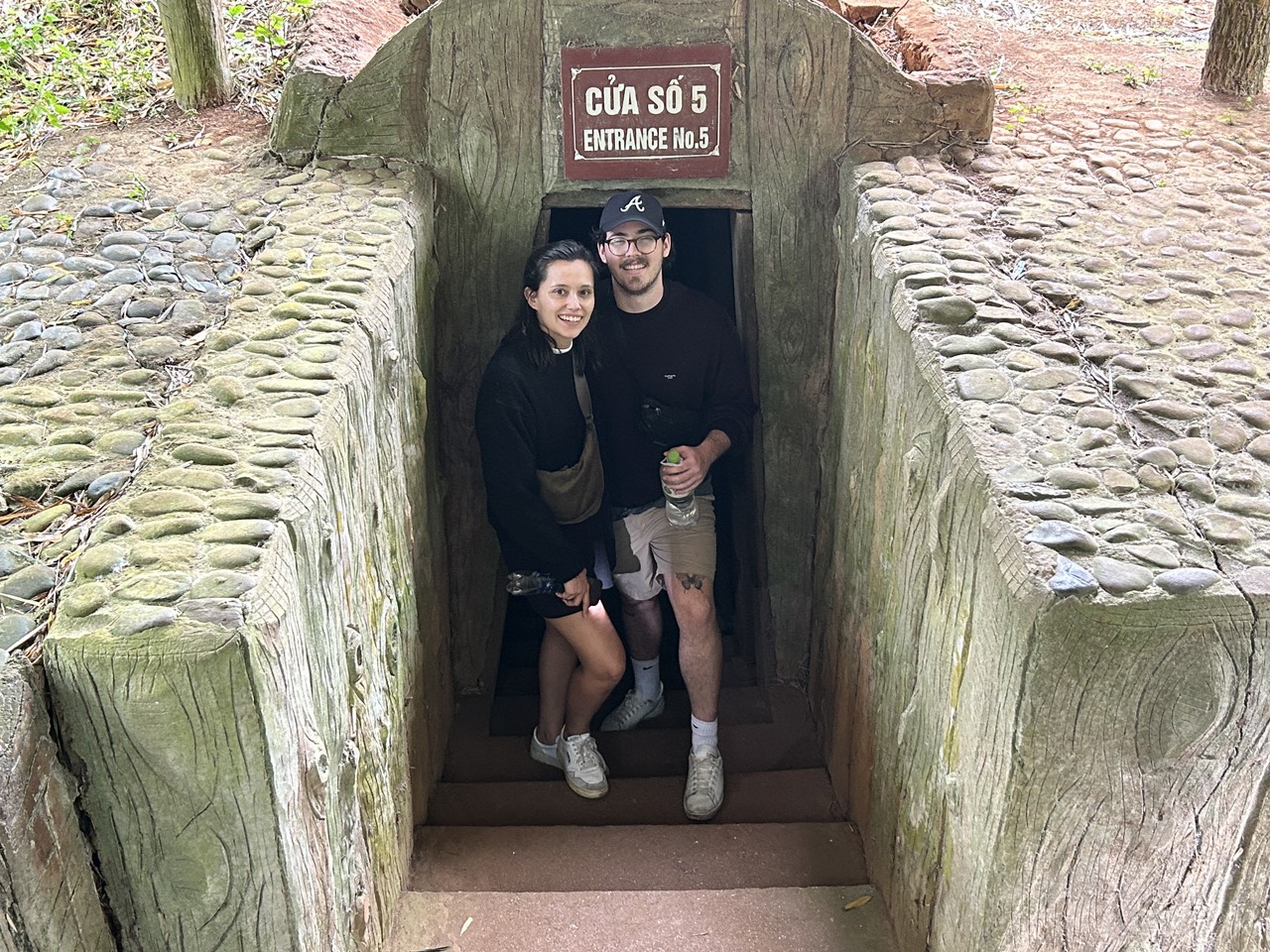Hue City, Vietnam: Things To Know About Hue – Your Complete Travel Guide
If you’re planning a trip to Vietnam, Hue City should be at the top of your must-visit list. As someone who’s explored every corner of this historic imperial capital, I’ll share everything you need to know about this UNESCO World Heritage site that perfectly blends ancient heritage with modern Vietnamese life.
What Makes Hue Special? Understanding Vietnam’s Imperial Heart
Located in central Vietnam along the banks of the Perfume River, Hue served as the national capital under the Nguyen Dynasty from 1802 to 1945. Today, it’s a city where ancient tombs, pagodas, and the magnificent Imperial City coexist with bustling markets and contemporary cafes.
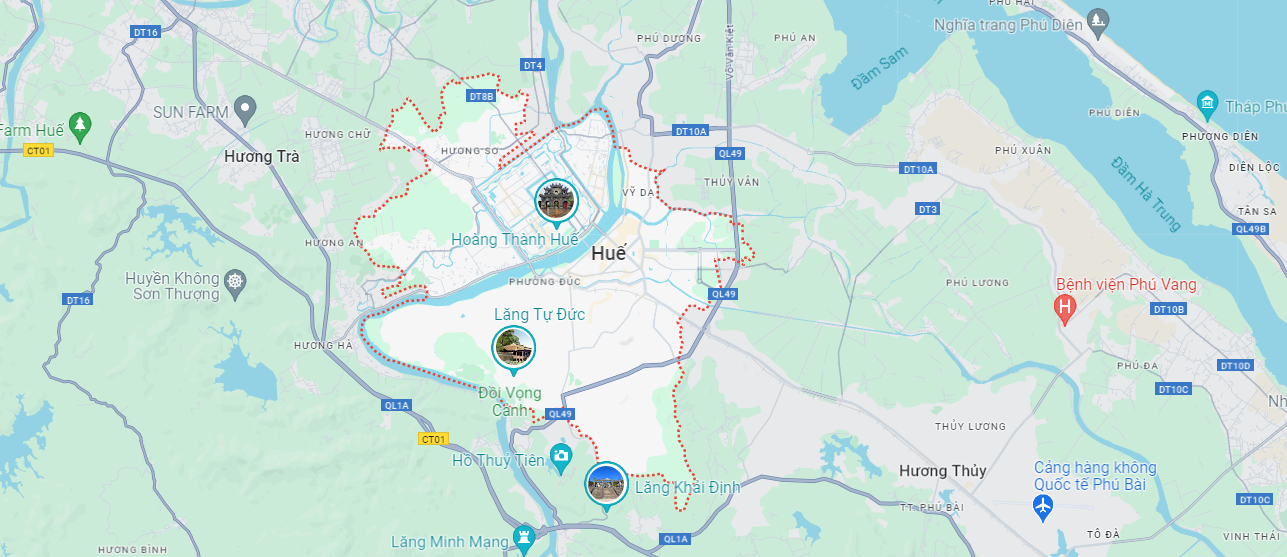
Unlike the frenetic pace of Ho Chi Minh City or Hanoi, Hue maintains a more relaxed atmosphere that lets you truly absorb its rich cultural heritage. The city’s UNESCO World Heritage status isn’t just a title – it’s a testament to the remarkably preserved architecture and cultural traditions you’ll encounter at every turn.
When to Visit Hue: Weather and Best Travel Times
Timing your visit to Hue can make or break your experience. Here’s what I’ve learned from multiple visits across all seasons:
| Season | Weather | Pros | Cons |
|---|---|---|---|
| February – April | 20-28°C, minimal rain | Perfect weather, festivals | Higher prices, crowds |
| May – August | 28-38°C, hot & humid | Fewer tourists, lower prices | Extreme heat |
| September – January | 19-25°C, rainy season | Lush landscapes | Frequent flooding |
Pro tip: I recommend visiting between February and April when the weather is ideal and you can experience the vibrant Tet Festival if your timing aligns with the lunar calendar.
Top Attractions in Hue: Must-See Historical Sites
The Imperial City (Dai Noi)
The crown jewel of Hue’s attractions, the Imperial City is a massive complex surrounded by a moat and thick stone walls. Walking through the Meridian Gate (Ngo Mon), you’ll enter a world of pavilions, gardens, and temples that once housed Vietnam’s royal family.
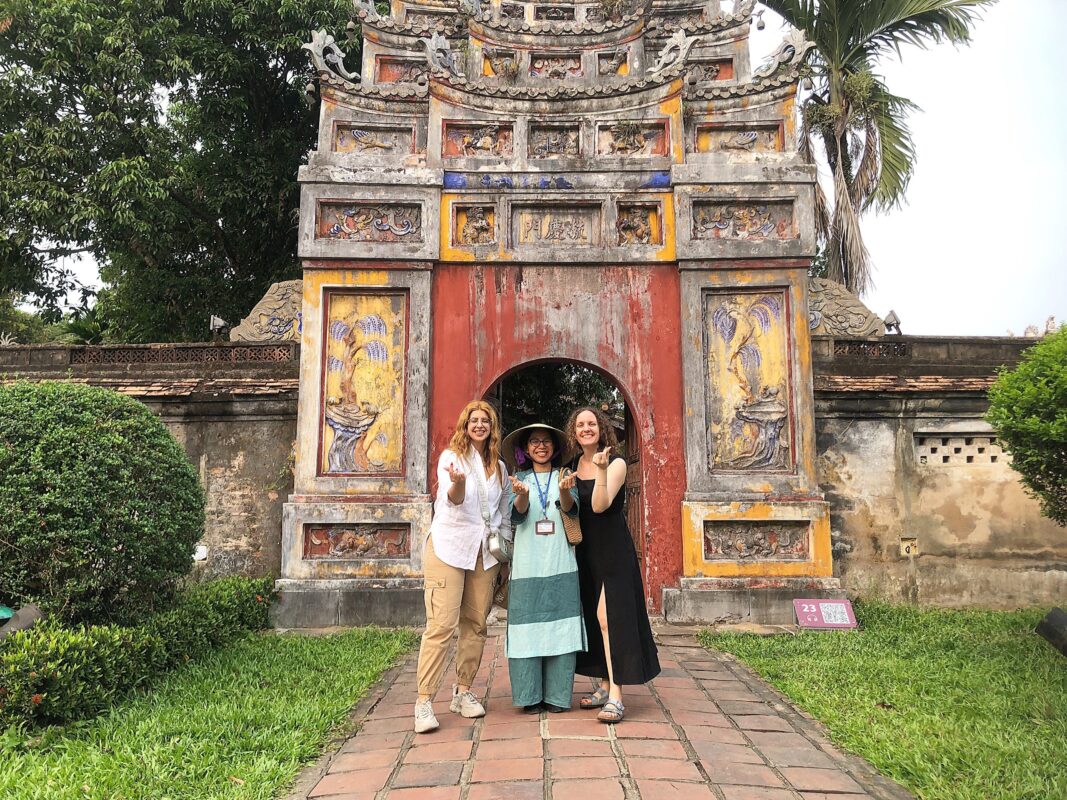
Key areas to explore include:
- Thai Hoa Palace – The emperor’s coronation hall with stunning lacquered columns
- The Forbidden Purple City – Once exclusively for the royal family
- The Nine Dynastic Urns – Bronze artifacts symbolizing Nguyen power
- Royal Theater – Traditional performances still held regularly
Royal Tombs Along the Perfume River
Each Nguyen emperor built their own elaborate tomb, creating a collection of architectural masterpieces scattered around Hue. The three most impressive are:
1. Tomb of Minh Mang: Known for its perfect harmony with nature, this tomb complex features 40 structures seamlessly integrated into the landscape. The symmetrical design reflects the emperor’s Confucian beliefs.
2. Tomb of Tu Duc: My personal favorite, this tomb doubles as a pleasure palace where the emperor spent his final years. The peaceful lake, pavilions, and theater create an atmosphere of refined elegance.
3. Tomb of Khai Dinh: The most recent tomb blends Vietnamese and European architectural styles, featuring intricate mosaic work that took 11 years to complete.
Thien Mu Pagoda: Hue’s Spiritual Icon
Standing seven stories tall on the north bank of the Perfume River, Thien Mu Pagoda has become Hue’s unofficial symbol. Built in 1601, it’s not just a tourist attraction but an active monastery where monks still practice.
Don’t miss the vintage Austin car in the back, which carried the monk Thich Quang Duc to Saigon for his self-immolation protest in 1963 – a pivotal moment in Vietnamese history.
Getting Around Hue: Transportation Tips
Navigating Hue is refreshingly straightforward compared to larger Vietnamese cities. Here are your best options:
| Transport Method | Best For | Cost Range | Notes |
|---|---|---|---|
| Bicycle | City exploration | $2-5/day | Perfect for good weather |
| Motorbike | Tomb visits | $5-10/day | International license required |
| Dragon Boat | River attractions | $15-30/trip | Includes commentary |
| Taxi/Grab | Comfort travel | $2-10/trip | Air-conditioned |
Local insight: Renting a bicycle to explore the Imperial City and nearby areas gives you the freedom to stop whenever something catches your eye – and trust me, that happens often in Hue!
Hue Cuisine: A Royal Feast for Food Lovers
Hue’s culinary scene deserves its own trip. The city’s royal cuisine tradition means even street food here has an elegant twist. Must-try dishes include:
Bun Bo Hue: The City’s Signature Noodle Soup
While pho might be Vietnam’s most famous soup internationally, locals know bun bo Hue is the real deal. This spicy beef and pork noodle soup features a complex broth with lemongrass, shrimp paste, and chili oil. Find the best bowls at Quan Cam on Pham Hong Thai Street.
Royal Rice Cakes (Banh Beo, Banh Nam, Banh Loc)
These delicate rice cakes showcase Hue’s refinement:
- Banh beo – Steamed rice cakes topped with dried shrimp
- Banh nam – Flat rice dumplings wrapped in banana leaves
- Banh loc – Translucent tapioca dumplings with shrimp and pork
Com Hen: Clam Rice
This humble dish of rice topped with baby clams, herbs, peanuts, and crispy pork rinds perfectly represents Hue’s ability to transform simple ingredients into something extraordinary. Order it at the stalls along the Perfume River for the most authentic experience.
Where to Stay in Hue: Accommodation Guide
Choosing the right neighborhood in Hue significantly impacts your experience. Based on extensive stays, here’s my breakdown:
Best Areas to Stay
1. Imperial City Area: Stay here if you want to walk to major attractions. Hotels like Eldora Hotel offer traditional architecture with modern amenities.
2. Perfume River Banks: Perfect for sunset views and easy access to both sides of the city. The riverside promenade is ideal for evening strolls.
3. Pham Ngu Lao Area: The backpacker district offers budget accommodations and vibrant nightlife, though it’s further from historical sites.
Hotel Categories and What to Expect
| Category | Price Range | What You Get | Recommended For |
|---|---|---|---|
| Budget | $10-25 | Clean rooms, WiFi, often breakfast | Backpackers, solo travelers |
| Mid-range | $25-60 | Pool, restaurant, tour desk | Couples, comfort seekers |
| Luxury | $60+ | Spa, river views, concierge | Honeymoons, special occasions |
Day Trips from Hue: Expanding Your Adventure
Bach Ma National Park
Just 40km from Hue, Bach Ma National Park offers a refreshing escape into nature. The park features stunning waterfalls, hiking trails, and views stretching to the coast. The Five Lakes trail is particularly rewarding, though challenging.
Thuy Bieu Village
This traditional village offers authentic rural experiences just 15 minutes from central Hue. Activities include:
- Cycling through pomelo orchards
- Traditional foot massage with medicinal herbs
- Cooking classes in local homes
- Incense-making workshops
DMZ Tour
History buffs shouldn’t miss the Demilitarized Zone tour, exploring Vietnam War sites including:
- Vinh Moc Tunnels – Underground village that housed 300 people
- Khe Sanh Combat Base – Former US Marine base
- Hien Luong Bridge – Symbol of national division
Practical Tips for Visiting Hue
Money Matters
While credit cards are accepted at hotels and upscale restaurants, Hue still operates largely on cash. ATMs are plentiful, but notify your bank of travel plans. Budget approximately:
- Street food meal: $1-3
- Restaurant meal: $5-15
- Entrance fees: $2-6 per site
- Guided tours: $20-50 per day
Cultural Etiquette
Hue residents take pride in their cultural heritage. Show respect by:
- Dressing modestly at religious sites (covered shoulders and knees)
- Removing shoes before entering temples and some traditional buildings
- Asking permission before photographing locals
- Speaking quietly in sacred spaces
Language Tips
While English is spoken in tourist areas, learning basic Vietnamese phrases enhances your experience. Hue has a distinct dialect, but standard Vietnamese works fine. Key phrases:
- Xin chào – Hello
- Cảm ơn – Thank you
- Bao nhiêu tiền? – How much?
- Ngon quá! – Delicious!
Planning Your Hue Itinerary
3-Day Suggested Itinerary
Day 1: Imperial City and Perfume River
- Morning: Explore Imperial City (3-4 hours)
- Afternoon: Thien Mu Pagoda and river cruise
- Evening: Night market and street food tour
Day 2: Royal Tombs
- Morning: Tu Duc and Minh Mang tombs
- Afternoon: Khai Dinh tomb and local lunch
- Evening: Traditional music performance
Day 3: Local Experiences
- Morning: Dong Ba Market and cooking class
- Afternoon: Thuy Bieu Village bicycle tour
- Evening: Sunset at Perfume River bridge
Final Thoughts: Why Hue Captures Hearts
After countless visits to Hue, I’m still discovering new corners and stories. This city offers something increasingly rare in our fast-paced world: the chance to slow down and connect with history, culture, and tradition in a meaningful way.
Whether you’re exploring the Imperial City’s hidden gardens, savoring a perfect bowl of bun bo Hue, or watching sunset paint the Perfume River gold, Hue provides experiences that linger long after you leave. It’s not just a destination to check off your list – it’s a place that invites you to return, each visit revealing new layers of Vietnam’s imperial past and vibrant present.
Ready to explore Hue? Check out our curated Hue tour packages or read more about traveling Central Vietnam. For comprehensive Vietnam travel planning, Lonely Planet’s Vietnam guide and Tourism Authority resources provide additional insights.


